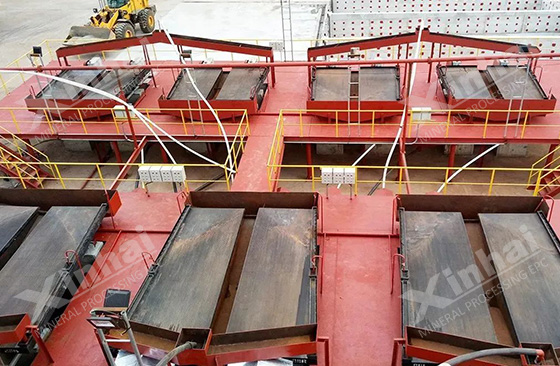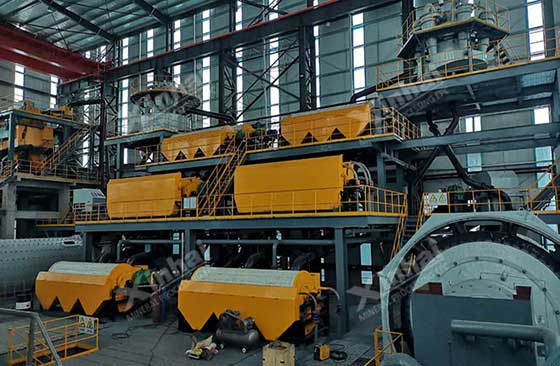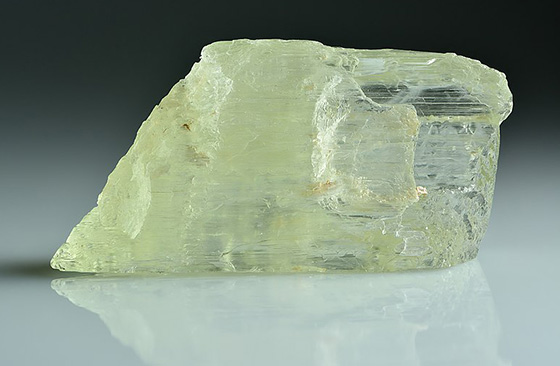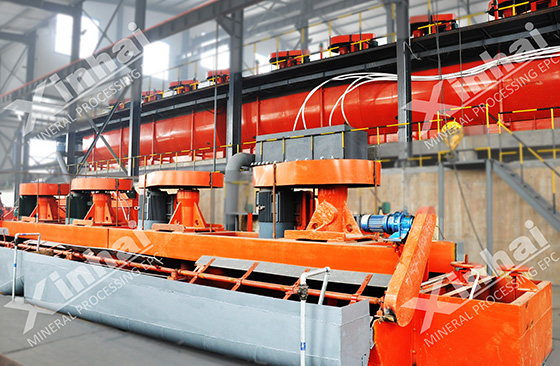Spodumene ore is a lithium-containing mineral and is one of the important lithium sources. It is a lithium-containing pyroxene mineral with the chemical formula LiAl(Si2O6). Spodumene is the main ore of lithium, and its high lithium content makes it a valuable resource for lithium extraction. Therefore, it is necessary to understand the beneficiation method of spodumene. The following will introduce you to several commonly used lithium ore spodumene beneficiation methods, and what factors should be considered when choosing a suitable beneficiation method.

Use the table of contents below to navigate through the guide:
01Commonly used lithium ore spodumene beneficiation methods
According to the different components of spodumene ore, the beneficiation method chosen in actual production is also different. The spodumene separation methods commonly used in ore dressing mainly include gravity separation, foam flotation, magnetic separation, dense medium separation and heat treatment.
1. Gravity separation method: This method utilizes the difference in specific gravity between spodumene and gangue minerals. Commonly used dense media separation and gravity separation methods can separate spodumene from gangue minerals.
2. Froth flotation method: Froth flotation is a method widely used in spodumene ore concentration. In this process, the ore is ground to fine particles and mixed with water and flotation reagents. By introducing air bubbles into the flotation cell, hydrophobic spodumene particles will attach to the bubbles and rise to the liquid surface for collection.
3. Magnetic separation: Magnetic separation is used to remove iron-containing minerals or impurities from spodumene ore. This method uses the magnetic properties of specific minerals to separate them from non-magnetic gangue minerals.

4. Dense medium separation method: The dense medium separation method is to suspend the crushed ore in a dense medium (such as iron-silicon or magnetite) and separate it according to the density of the mineral. Since spodumene is a heavy mineral, this method can be used to separate it from the lighter gangue minerals.
5. Heat treatment method: Some spodumene ores can be calcined or roasted to improve the extraction efficiency of lithium. These processes help modify the mineral structure and increase the accessibility of lithium in subsequent processing steps.
02How to choose the right spodumene beneficiation method?
The choice of a particular spodumene beneficiation method may depend on a variety of factors, including the mineralogical characteristics of the ore, lithium grade, impurity levels, and desired lithium concentration requirements. Additionally, ongoing research and development in the field of lithium extraction may introduce new beneficiation methods.
Therefore, choosing the right spodumene ore beneficiation method involves considering several factors. Here are some key considerations:

1. Ore characteristics: conduct a comprehensive characteristic analysis of spodumene ore, including mineralogy, lithology, chemical composition and beneficiation tests. Determine lithium grade, impurity levels, and presence of other valuable minerals. This information will assist in selecting the appropriate beneficiation method.
2. Lithium recovery: Evaluate the efficiency of different beneficiation methods in terms of lithium recovery. Consider potential losses and overall extraction efficiency. The goal is to maximize lithium recovery while reducing waste of resources.
3. Cost analysis: Evaluate the costs involved in each beneficiation method, including equipment, energy consumption, reagents, labor and maintenance costs. Consider the capital investment and operating expenses required to implement each approach. Choose a method that offers a good balance between cost-effectiveness and lithium recovery.
4. Environmental impact: Evaluate the impact of each beneficiation method on the environment. Consider potential impacts on water use, waste generation, emissions and disturbance to ecosystems. Choose methods that reduce environmental damage and adhere to sustainable practices.
5. Scale of operation: Consider the scale of operation and required production capacity. Certain beneficiation methods may be more suitable for small-scale operations, while others may be more suitable for large-scale industrial production.

6. Process efficiency: Evaluate the throughput, processing time and ability to process different ore qualities for each beneficiation method. Choose a method that offers high process efficiency and is able to efficiently process different ore types.
7. Technical expertise and infrastructure: Consider the technical expertise and availability of existing infrastructure required to implement the selected beneficiation method. Assess required skills, equipment availability, and compatibility of the chosen method with existing treatment facilities.
By carefully considering these factors, a lithium ore spodumene beneficiation method can be selected that matches the specific requirements, constraints and goals of the project. As the proposer and practitioner of " Turn-Key Service for Mineral Processing Plant (EPC+M+O)", Xinhai Mining can tailor spodumene beneficiation solutions, beneficiation equipment and follow-up mine operations for you. Welcome to consult for details information.


 marketing@ytxinhai.com
marketing@ytxinhai.com  0086 13810327080
0086 13810327080 






































































































 CHAT
CHAT MESSAGE
MESSAGE






